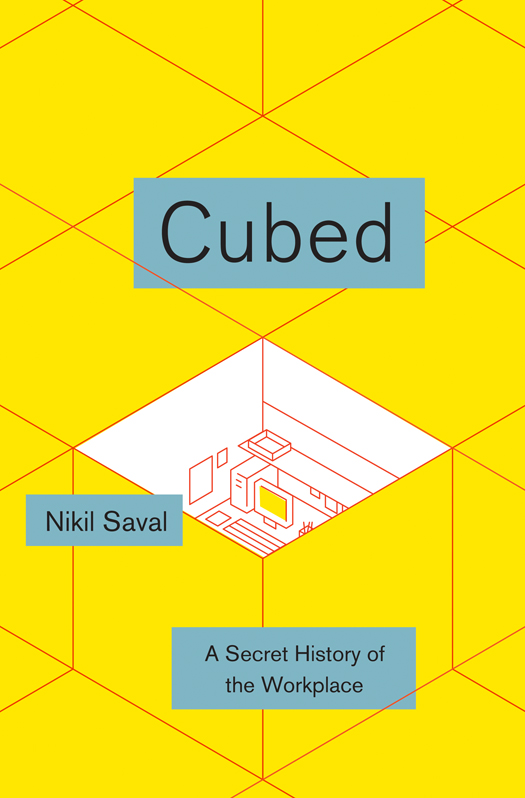
Cubed
A Secret History of the Workplace
کتاب های مرتبط
- اطلاعات
- نقد و بررسی
- دیدگاه کاربران
نقد و بررسی

February 3, 2014
Journalist Saval (an editor at n+1) offers a detailed social and cultural history of the white-collar workplace. He narrates the evolution of the office in the first decades of the 20th century and tells how “administration and bureaucracy over the world of business.” Along came the typewriter, vertical file cabinet, managers, and efficiency experts to organize this new class of workers. The most influential and ultimately terrifying of these is Frederick “Speedy” Taylor, the father of the time and motion study, who was responsible for “vast caverns of bull pens and steno pools” and “eventually workers the impression that their work was routine and dead-end.” Saval spends considerable time on the successes and failures of an office’s architecture and design: Frank Lloyd Wright’s radically organized Larkin Building in Buffalo in 1904 somehow leads us to Clive Wilkinson’s Disneyland-like paradise for TBWA/Chiat/Day in 1997. Saval’s readings of pop culture representations of the office and its workers add a lively and ironic perspective. We may have come to the point, Saval suggests, when the office may be disappearing. Self-identified as a “work of synthesis,” the book draws heavily on the credited work of others, so one wonders about the “Secret” of the title. Never mind. The result is an entertaining read. Agent: Edward Orloff, McCormick & Williams.

March 15, 2014
An editor of n +1 offers an illuminating study of the modern office and its antecedents. Many Americans spend most of their working hours in cubicles, but 93 percent of those individuals report disliking their work environments. Yet this Dilbert-esque disgruntlement with office life is nothing new. Saval shows that from the beginning of its existence in the 19th century, cultural observers like Herman Melville and Charles Dickens considered the office a suspect space. The activities that took place there were "weak, empty and above all boring" since they lacked the dynamism of the deal making that went on in the business world they supported. At the same time, the office has also been "a source of some of the most utopian ideas and sentiments about American working life." Through analyses of historical, sociological and cultural texts, Saval examines the double-edged promise that the office has held to American workers over the last 150 years. In the 19th century, life behind a desk offered social respectability and security while providing an apparent refuge from the physical hardships of factory work. As the business world expanded and work became increasingly rationalized for maximum output and efficiency, so did the office. This gave rise to the hyperefficient offices of the 20th century, where managing workers--down to their very movements and behaviors--as well as data and space became a frighteningly exact science. In the 21st century, technological shifts and global economic downturns have wrought still further changes in office life. Freelancers now inhabit homes and cafes, transforming leisure and living spaces into work spaces. These developments have not only stripped office professionals of the illusion of security; in a wickedly ironic, but perhaps predictable, historical twist, they have also cast them back into the "contingency and precariousness" from which the office was supposed to save them. Ferociously lucid and witty.
COPYRIGHT(2014) Kirkus Reviews, ALL RIGHTS RESERVED.

May 15, 2014
In 2011, more than 60 percent of employed Americans worked in "some form of a cubicle," states the opening of this book; 93 percent of them, the author goes on to say, disliked the environment in which they worked. Numbers like these, even though their source isn't noted, are startling. How and why did we get to a situation in which the majority of us work in places we don't like? Saval (editor, n+1 magazine) traces the history of the office from 19th-century counting houses (in an opening discussion of Herman Melville's short story "Bartleby the Scrivener") to mid-20th-century skyscraper workplaces ("an especially tall collection of boring offices"), with row after row of desks and the bosses working elsewhere, and on to designer Robert Propst's Action Offices and cubbies. While plenty is said about design styles, even more of the content is the author's social commentary. In Saval's view, management is less concerned with making the office a creative place than with duping employees into thinking that their situation is better than it actually is. VERDICT The prose is lively and sharp. This isn't a scholar's book, but Saval is an acute observer whose tart observations may attract an unexpectedly wide audience.--David Keymer, Modesto, CA
Copyright 2014 Library Journal, LLC Used with permission.

























دیدگاه کاربران